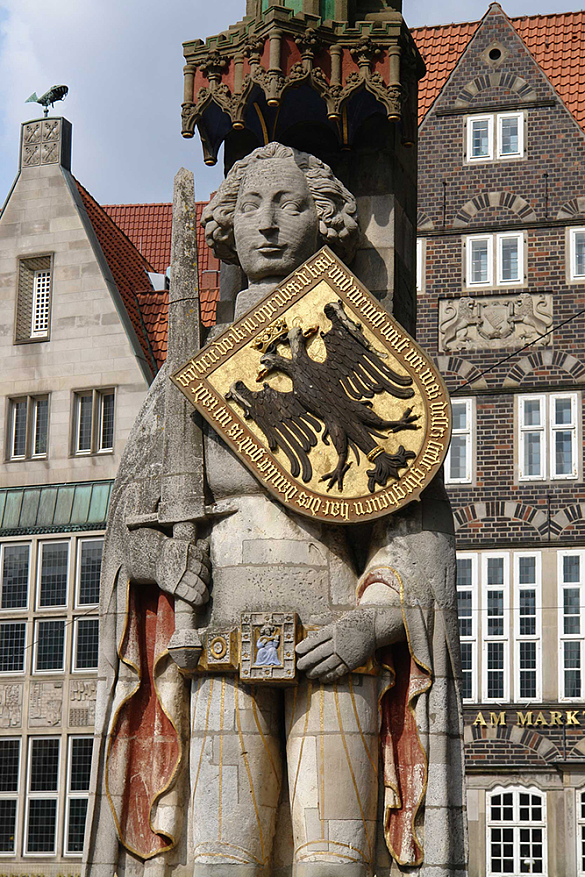
The Roland statue in front of the historical Town Hall is considered one of the most famous landmarks of Bremen. With a height of over 10 meters, the knight on the market square is the largest free-standing statue of the German medieval ages and since 2004 forms part of the UNESCO World Heritage.
The stone Roland erected in Bremen in 1404 is one of the oldest and most representative Roland statues that were once erected as a symbol of freedom and market rights on market squares in Central Europe. It refers to a historical personality, namely a paladin (companion) of Emperor Charlemagne. The Roland in Bremen is to exemplify: the Emperor is the founder of the city, it is him who gave the city its rights and privileges.
The figure of approx. 5.5 meters stands on a stepped pedestal of 60 centimetres. In the back it is supported by a pillar crowned by a canopy decorated with Gothic ornaments. The statue reaches an overall height of 10.21 meters and is thus the highest free-standing statue of the German medieval ages.
The Roland and the Town Hall in Bremen are part of humanity’s world heritage because they bear unique testimony to civic autonomy and sovereignty as they developed over the centuries in Europe. And they symbolise the autonomous status of the city state of Bremen until today.